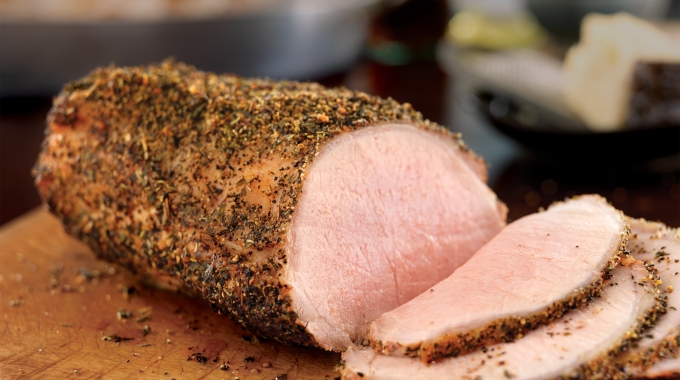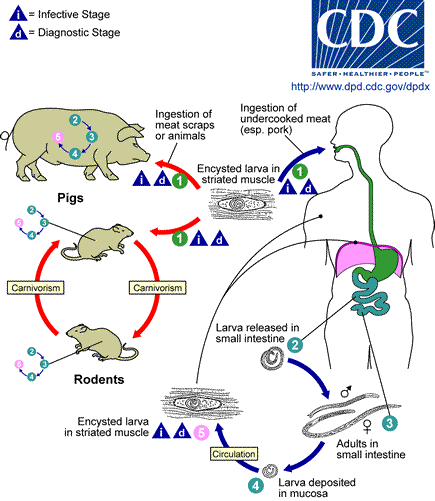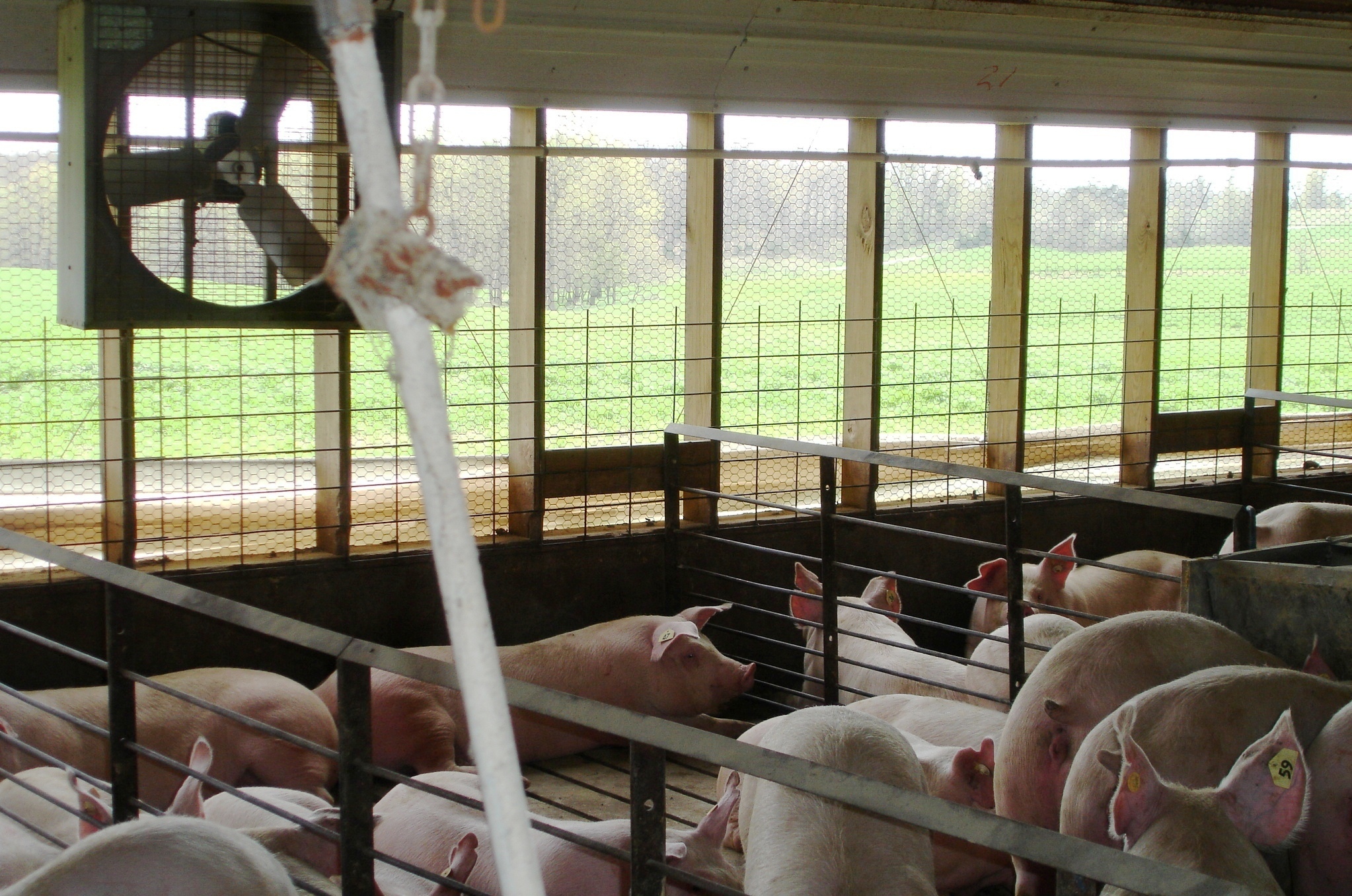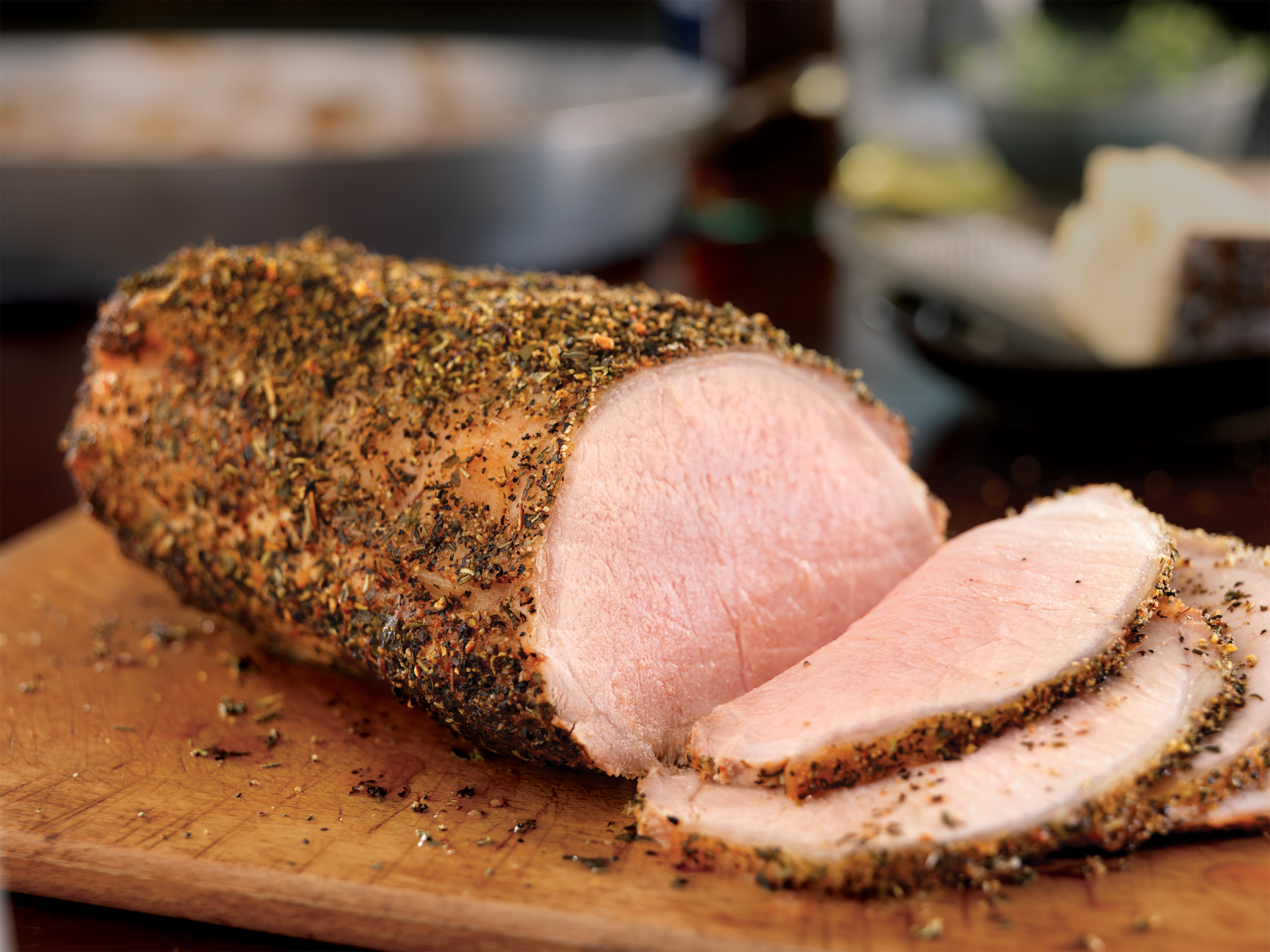
For a long time as a child, I didn’t like pork… I know, the daughter of a butcher not liking pork it’s like a sin. Why didn’t I like pork? Well my mom usually over cooked it. It was dry, it was tough, and it was tasteless. She cooked it like her mother had always cooked it for her. Then one day, the butcher man himself, cooked us up some pork chops. Like a typical child, I turned my nose up at it but my dad didn’t give up until I tried it. His pork chops were juicy, they were flavorful, and they were delicious. Now pork has become a regular staple in my weekly meal plan. So what did Dad do that Mom didn’t…? He didn’t overcook the pork, he cooked it the way it should be. 
In the spring of 2011, USDA released new cooking guidlines for pork. Pork no longer needed to be cooked to 160 degrees… New required temperature for cooking pork. 145 degrees. According to Pork Be Inspired, “The new temperature recommendation reflects advances in both food safety and nutritional content for today’s pork, which is much leaner than Grandma’s, and even Mom’s, pork. On average, the most common cuts of pork have 27 percent less saturated fat than the same cuts 20 years ago.” But this new temperature still, two years down the line, has people in fear to cook pork to the newly suggested temperature. Why?
Cooking pork to 145 degrees can mean that it will still be pink. For so long, we all knew pork as the “white meat”. Pork needed to be cooked until we were sure it was white. And people have been taught this for generations. So how and why did this stigma about cooking pork begin? It all started with a parasite known as trichinella spiralis. Trichinella spiralis is a parasitic roundworm which can be found in many warm-blooded carnivores and omnivores, including animals like pigs and bears.
Trichinella spiralis has a long standing stigma associated with pork products, not only in the U.S. but around the world. The concept which many people have about the need to cook pork thoroughly is based on the risk of becoming infected with this parasite. According to USDA, “At the beginning of the 20th century conservative estimates showed a 2.5% infection rate in U.S. pigs. Even more alarming were postmortem surveys, conducted in the 1930’s. A National Institute of Health report published in 1943 found 16.2% of the U.S. population to be infected (1 out of every 6 people). This type of information led to considerable publicity on the dangers of eating pork.”
But despite the long history with trichinae in pork, major changes have occurred in the pork and meat industries in the past 50 years. Trichinae is no longer considered a concern in commercial herds and human cases of trichinae declined from about 500/year in the 1940’s to fewer than 50/year in the last decade. And of those 50 cases, the vast majority of them result from non-pork sources such as bear, other game meats, and home grown animals. The U.S. Pork Checkoff states, “The odds of getting trichinosis from eating pork sold at retail stores is only 1 in 154 million. Why? Because, the parasite responsible for this disease has been almost completely eliminated from modern pork production.”
The drastic declines and a new trichinosis free pork reflects the changes made in our U.S. Pork industry. Historically, pigs picked up trichinae from feeding of animal waste products contaminated with parasites; exposure to living or dead rodents or other wildlife infected with trichinae; or cannibalism among pigs within an infected herd. The movement towards high levels of biosecurity and hygiene in most commerical pork operations as well as vast changes to how pigs are fed is what has allowed trichinae to no longer be a problem in our pork supply. Do you ever wonder why pigs are raised in controlled environments? Even though our commercial pork industry is trichinae free, opportunities still exist for pigs to contract the parasite so the way our hogs are raised today reflect that.
So what increases a pig’s risk of exposure to trichinae…? Pigs really are pigs. They are opportunists and will eat whatever they find. They really like to root in the dirt which could unbury all sorts of interesting things, dead or alive which will end up in the pig’s mouth. They like to bite and chew. It’s just the nature of pigs. Rodents, especially rats, serve as a host for trichinae infection. Rodents can pick up infection from landfills, carrion, or other dead animals. When rat populations are in close contact with pigs, it is possible that rats will be caught and eaten or if a carcass is found, it might be chewed on. Other small mammals like raccoons, skunks, and opossums also have a high prevalence for trichinae infection. By eliminating exposure of pigs to live wildlife, it greatly reduces their risk to trichinae.
By nature, hogs are omnivores meaning that they eat plants, but they also eat meat. Another way trichinae can be greatly reduced is by not feeding uncooked waste products, table scraps or animal carcasses to pigs. This is particularly important in the case of carcasses from hunted or trapped wildlife. By cooking any sort of waste products, table scraps, or animal carcasses in order to feed to pigs, you are killing the trichinae which is important to note if you are raising hogs at home and feeding them anything but hog feed from a feed store or something similar.
So how did this new temperature come about…? Well, we got rid of the trichinae in our pork system and there was no need to cook pork until 160 degrees anymore. The new cooking temperature will produce pork that’s juicy and tender, not overcooked. The new cooking temperature will also likely yield a finished product that is pinker in color than most of you are accustomed to and it is PERFECTLY okay! In fact, from 1986-1906 nearly 1.41 percent of our pork tested positive for trichinae and by 1996, nearly 90 years later, that number had dropped to ZERO percent of pork tested positive for trichinae. It’s thanks to advances both in the meat industry as well as our commercial pork industry, we can now enjoy flavorful, tender pork instead of overcooking it and requiring it to be slathered in gravy.
For a great pork cooking temperature chart, Pork Be Inspired has created this wonderful printable.
How about you? Did you know that pork could be cooked to 145? Or were you still cooking pork like grandma taught you so many years ago?
[polldaddy poll=7240562]For more information about Pork and Trichinae, please check out this USDA fact sheet. And if you’re interested in how commercial hogs are produced? Hog farmer, Chris Chinn has put together some great videos, visit her site! And go enjoy some tasty, tender pork chops!
Related articles






I don’t like my meat with pink to start with so I may have issues with this! I rarely cook pork chops at home though bc I have such a bad history of overdoing them. I’m not much for using the thermometer though. 🙂
I use my meat thermometer for everything! I don’t trust my own eye or recipes a lot of times, especially with chicken. It’s the fool proof way to tell when things are perfectly cooked, however you make like them!